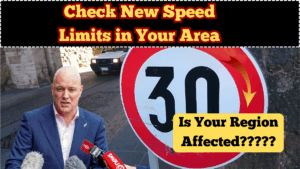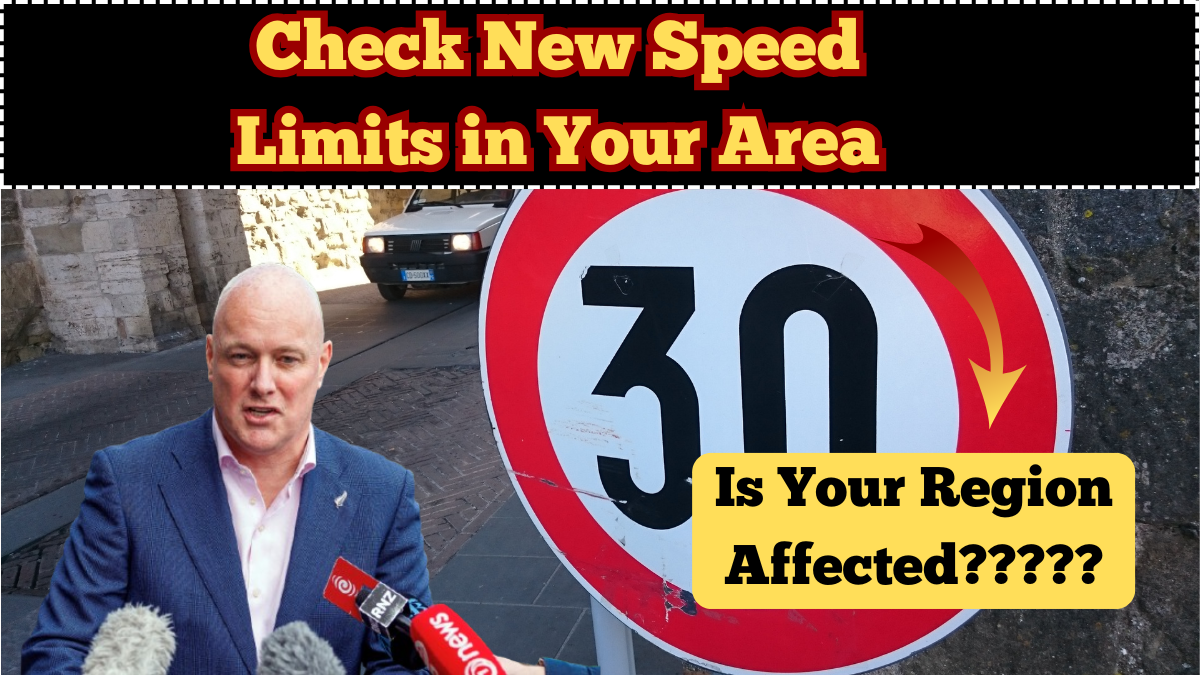In a sweeping road safety initiative, Waka Kotahi has released updated speed regulations across the country for 2025. These changes to NZ traffic rules affect both urban streets and rural highways, and are designed to reduce road fatalities, improve pedestrian safety, and create more uniform standards nationwide.
Whether you’re a city commuter or a rural driver, these regional speed change updates are likely to affect your daily routes. Authorities are now rolling out new signage and enforcement zones across high-risk areas and schools.

What’s Changing in the Speed Limit Policy?
Under the new NZ traffic rules, certain categories of roads have revised limits depending on crash history, traffic volume, and population density. Key highlights of the 2025 policy include:
-
Reduction of limits in school zones from 50 km/h to 30 km/h
-
New limits of 80 km/h on previously 100 km/h rural roads
-
40 km/h caps in busy urban streets and CBD zones
-
Permanent slow zones NZ around hospitals and aged-care areas
This regional speed change has been introduced following in-depth research on accident data and community feedback collected over the last 2 years.
Why These Changes Were Introduced
The primary objective behind these NZ traffic rules updates is safety. With an increase in urban population density, pedestrian activity, and vehicle usage, government transport officials deemed it necessary to slow vehicles down in vulnerable zones.
The slow zones NZ initiative has already shown success in trial areas, including lower accident rates and smoother traffic flow. Now, with full nationwide implementation, every region is expected to benefit from reduced road trauma.
Regions and Roads Most Affected
Not all areas will see the same level of change. Here’s where the regional speed change will be most visible:
-
Auckland: Major inner-city roads like Karangahape Road and Queen Street
-
Wellington: Zones near Lambton Quay and Courtenay Place
-
Christchurch: School zones and intersections around Hagley Park
-
Rural Waikato & Otago: Long stretches of formerly 100 km/h roads are now 80 km/h
The NZ traffic rules team will continue monitoring accident statistics to adjust these limits if necessary.
How to Stay Compliant with the New Speed Limits
Avoid penalties and stay safe by:
-
Watching for newly installed speed signs
-
Staying updated through local council websites and news bulletins
-
Using GPS systems that reflect live regional speed change updates
-
Practicing extra caution in slow zones NZ, especially around schools and hospitals
Traffic cameras and mobile patrol units are already active in high-risk areas to enforce compliance with the new NZ traffic rules.
FAQs
Why are New Zealand’s speed limits changing in 2025?
The new NZ traffic rules aim to reduce accidents and fatalities by slowing down traffic in vulnerable and high-traffic areas.
What are slow zones in NZ?
Slow zones NZ refer to areas like school zones, hospitals, and urban centers where speed limits have been permanently reduced to improve safety.
Which regions are most impacted?
The regional speed change affects both urban and rural areas, with cities like Auckland, Wellington, and Christchurch seeing major updates.
Will I be fined if I exceed the new limits?
Yes, all new limits under NZ traffic rules are enforceable by law, and fines or demerit points may apply if exceeded.
How can I stay informed?
Keep an eye on road signage, follow council updates, and ensure your GPS or navigation tools are updated to reflect all regional speed change alerts.
Click here to know more.
